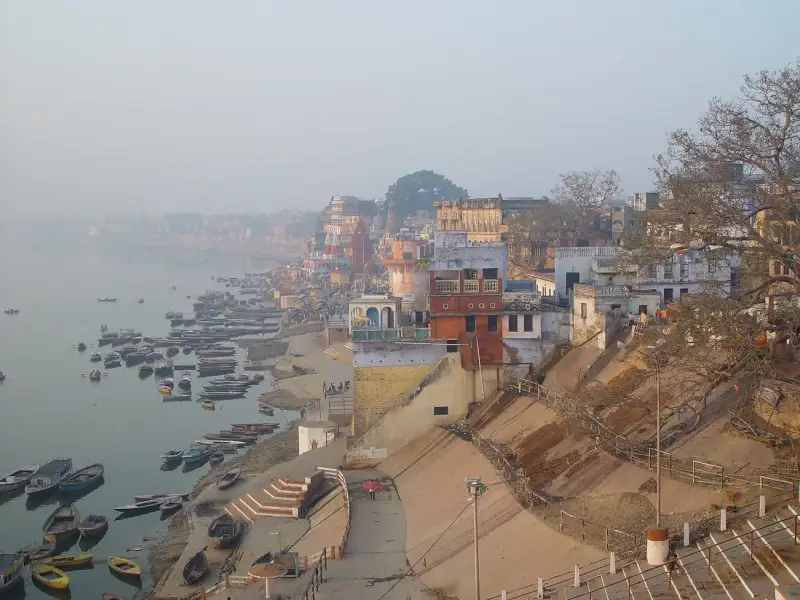Travel means change. Everyone knows it. And that’s exactly why we take you on a journey!
Travel agencies can be found all over the Internet. Our difference is that we organize journeys in such a way that you learn to welcome change with open arms—whatever form it may take. Not so common, right?
Very often, our trips are shaped by change: a sudden opportunity to attend an unexpected teaching, or to take part in a ceremony discovered along the way.
After discussion, we take a new direction and adapt to these changes, which then become unforgettable memories.
At the end of 2022, after Covid had grounded us for a few years, we were finally back on the road, now with two guides leading each trip.
This new start took us on the footsteps of the Buddha—from India to Nepal, and then to Bodhgaya to meet His Holiness the Dalai Lama.
When High Energy Brings Challenges
Experience has shown that whenever one visits a place of very high energy—such as Mount Kailash or Bodhgaya—the mere fact of arriving there can bring its own challenges.
-
In 2017, during the Kalachakra in Bodhgaya, I saw a couple arrive two days late after numerous extra layovers caused by heavy fog in northern India.
-
In 2018, only two participants managed to join me for the Kora of Mount Kailash. Just hours before landing in Lhasa, we still had to patiently wait for the precious permit that would allow us to continue.
And in 2022, the adventure began with visas. Everyone had applied for e-visas—logical enough. But at the last minute, someone at the Indian embassy told us: “It’s forbidden to re-enter India from Nepal with an e-visa.” Even though our passports would be stamped upon arrival in Delhi, showing multiple entries were allowed, doubt set in. We sent our passports back to get paper visas… which returned 24–48 hours before departure. Nerve-wracking! For the record, some participants didn’t bother and traveled with their e-visas—proving the embassy official wrong.
A Sudden Emergency
On the day of arrival, all flights connected perfectly, and everyone reached Varanasi on time. Wonderful!
But that same evening, an unfortunate event forced us to adapt again.
Geshe Urgyan Tsering, who was to accompany us, suffered an epileptic seizure as we entered a monastery, hitting his head hard on the ground. The moment was intense: at first he lay motionless, face down. When I turned him on his side, blood was running from his nose and his body began convulsing.
Quickly the monks intervened, moving me aside. Though unconscious, he instinctively sat up in cross-legged posture while they massaged his back. After twenty long minutes, he slowly returned. Not fully, but enough. Relief.
Later that night, Urgyen and I took him to a hospital—tiny, with only a handful of beds and one doctor. He was sent back to the hotel with some medication. After another seizure, we rushed to a larger hospital. There, amidst a dozen beds and a crowd of curious onlookers (taxi driver, neighbor, passers-by…), he was given an IV.
The next morning, as I led the group to Sarnath for teachings on the First Noble Truth and meditation, Urgyen brought Geshe for a CT scan. Thankfully, aside from a broken nose, no brain damage was found. Doctors prescribed rest. With family members arriving in Bodhgaya, Urgyen arranged a taxi and escorted him there, returning at dawn.
Adapting the Program
Meanwhile, I proposed three itinerary options to the group:
-
Visit Sarnath in the morning, Varanasi in the afternoon/evening, then on to Lucknow and Shravasti before reaching Lumbini.
-
Visit Sarnath, spend a relaxed afternoon, travel to Varanasi the next morning, then continue on to Shravasti and Lumbini.
-
Visit Sarnath, then head straight to Lucknow and Shravasti, skipping Varanasi.
Everyone chose option 2. Day 3 was tough—departing at 5 a.m., arriving at 10 p.m.—but it allowed us to enjoy Shravasti without missing out on magical Varanasi.
Varanasi is essential. Many agencies skip it, but for anyone interested in Buddhism, two truths must be understood: suffering and death.
-
Sarnath embodies the teaching of suffering (First Noble Truth).
-
Varanasi embodies the teaching of death.
From Lumbini onward, we rejoined the original plan without changes.
The Lesson
Whatever happens, it is vital not to fall into defeatism. Live in the moment, and do everything possible to move forward.
This rule seems obvious, yet how often do we fail to apply it in daily life?
What blocks us? Often:
-
attachment to what was decided
-
fear of entering an unknown time frame or situation
Fear, doubt, and attachment are brakes. They stop us from making good decisions, from acting, from moving forward.
The key is letting go. Letting go of what was said, planned, or organized. If a plan doesn’t work, then immediately, without fear, look for other solutions and direct your full energy toward them.
The more you act in this way, the easier life becomes. You will navigate unexpected events more lightly.
And in today’s world—facing financial shifts, climate change, resource challenges, migrations—this adaptability is essential.
The more you let go, the more you will flow smoothly with the changes life presents.
So that’s it for today!
And here are a few photos of Varanasi!
Now it’s your turn to decide—and join us on the next journey!









Ajouter un commentaire
Commentaires